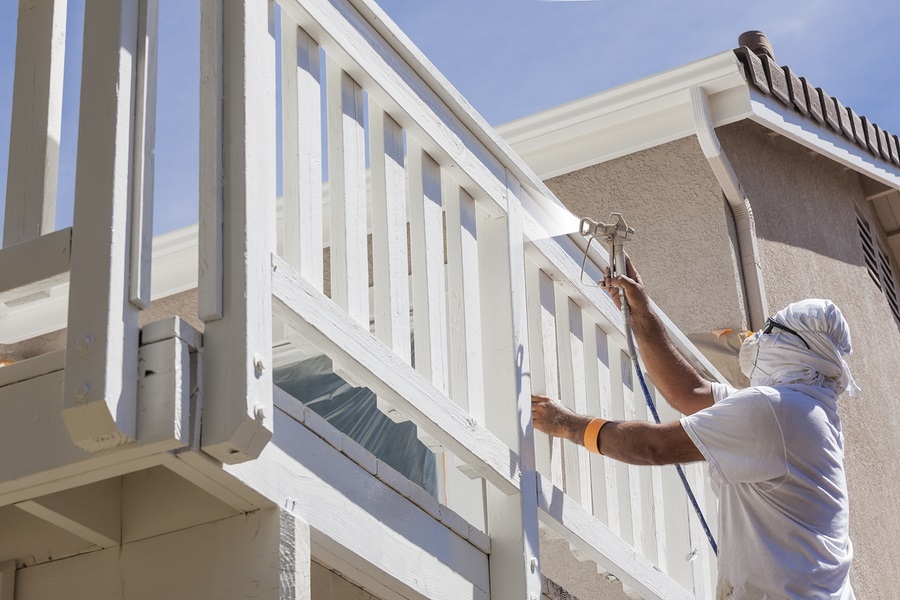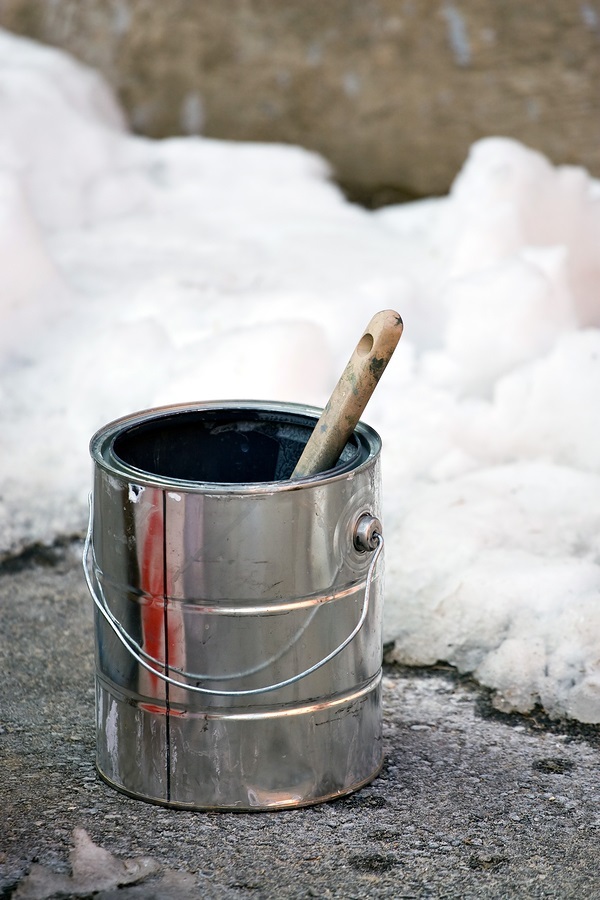There are several challenges you face when you decide to paint in cold weather. With oil-based paints, the oils involved tend to get thicker in the cold weather and that can make application difficult, and it also make drying unpredictable. In order to work with these types in cold weather, you would have to use a thinner in the proper amounts. With latex paints, the cold accelerates the drying process, which causes your paint to freeze and harden before you even have a chance to apply it.
While painting in the cold weather is not impossible, it does take some planning to get it right. As you make your plans for painting in the cold weather, there are a few things you must take into account in order to get the job done right.

The weather does not always cooperate with your painting project.
Monitor The Ambient Temperature
According to PaintPro.net, you do not want the ambient air temperature to fall below 35 degrees when you are painting the exterior of a building. This means that your prime times for painting run from mid-morning to early afternoon. If you start too early, the air could be too cold and you will run into problems. If you go too late, then there will not be enough ambient heat in the air to allow the paint to settle and dry properly. By monitoring the ambient temperature, you can get the job done right and get great results.
Use The Right Paint
You cannot grab any gallon of paint and start painting in the cold weather and hope for good results, because you probably will not get those good results. The paint you use should specifically be designed to withstand cold temperatures, and you will find that information on the paint can label. Do not try to force a regular gallon of paint to cooperate in the cold weather because you will not be happy with the results.
Be Sure To Use A Paint With The Right Drying Time
Paint can labels will tell you how long it takes the paint to adequately dry under various conditions. In order to get good results in cold weather, you need to find a paint that fits your schedule. If you are only going to be able to allow three or four hours for the paint to dry, then do not buy a paint that requires an overnight timeframe to dry properly.

Take the proper precautions when painting in cold weather.
Always Use A Good Primer
The primer you use on a painting project done in cold weather is critical to the success of that project. You should never try to do a cold weather painting project without a good primer, and you should pick a primer that is designed to work in the conditions you are experiencing.
If you want more information on how to complete a successful painting project, think about starting a course on the PDH Contractors website. You’ll be able to learn about the different ways to paint in the cold weather, along with a variety of other solid construction techniques you can use on your jobs throughout the year.
